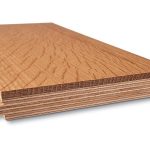The global candle market is projected to grow at a CAGR of 6.00%, reaching USD 22.7 Billion by 2035.
The global candle market is witnessing steady growth, transforming from a basic utility to a lifestyle, décor, and wellness staple. Fueled by increasing demand for ambient lighting, scented and natural wax candles, and rising consumer focus on home aesthetics and well-being, the market is evolving across products, materials, distribution, applications and regions. Based largely on data from Vantage Market Research, this press release outlines the current state of the candle market (as of 2024), its forecast to 2035, key trends, competitive landscape, segmentation, regional behavior, market dynamics, challenges and opportunities.
Our comprehensive Candle Market report is ready with the latest trends, growth opportunities, and strategic analysis. View Sample Report PDF.
Key Takeaways
- 2024 Revenue: The global candle market is valued at USD 11.97 billion in 2024.
- Forecast 2035: Expected to reach USD 22.70 billion by 2035.
- CAGR (2025-2035): 6.00% compound annual growth rate.
- Market Segmentation: By Product (Votive, Container Candle, Pillars, Tapers, Others), Wax (Paraffin, Soy, Beeswax, Palm, Others), Distribution Channel (Online, Offline) are key segments.
- Key Players: Major companies include Bath & Body Works; Better Homes and Garden; Bridgewater Candles; Colonial Candle; Circle E Candles; Diptyque; Jo Malone; Malin + Goetz; NEST; Slatkin & Co; Thymes; Village Candles; White Barn Candles; Yankee Candles.
Premium Insights
Increasing consumer preference for organic and natural waxes (soy, beeswax, palm) that are perceived as cleaner and more sustainable, as opposed to traditional paraffin.
Growing demand for scented candles, aromatherapy, and candles used in ambiances (home décor, spas, wellness) rather than purely functional lighting. Rising importance of holiday/seasonal and ritual use (festivals, religious ceremonies) plus gifting, which generate predictable spikes. Expansion of online distribution channels and e-commerce, making candles more accessible in remote markets, facilitating niche and premium offerings.
Market Size & Forecast
- 2024: USD 11.97 billion
- 2035: USD 22.70 billion
- CAGR (2025-2035): 6.00%
The candle market is fragmented to moderately concentrated: many small local and artisan players coexist with well-known global brands. North America holds the most revenue share and has strong brand recognition and marketing infrastructure. Asia Pacific is identified as one of the fastest-growing regions. Emerging markets in Asia are driving growth due to rising disposable incomes, growing home décor trends, and expanding distribution networks. Product differentiation is becoming more important: wax type, fragrance, eco-credentials, packaging, design etc., to stand out.
For Candle Market Research Report and updates detailed: View Full Report Now!
Product Insights
The product segment includes Votive, Container Candle, Pillars, Tapers, and Others. Container candles dominate due to their versatility, safety, and ability to diffuse fragrance effectively, making them popular for both décor and aromatherapy. Pillars and tapers are mainly used for decorative and ceremonial purposes, while votives serve as compact and affordable décor or gifting options. The “Others” category—such as floating, seasonal, or specialty-shaped candles—caters to niche and festive demand. Innovation in design, fragrance, and packaging further drives growth.
Wax Insights
The market is segmented by wax type into Paraffin, Soy Wax, Beeswax, Palm Wax, and Others. Paraffin remains the most widely used due to its cost-effectiveness and ease of availability. However, soy and beeswax candles are growing rapidly, driven by consumer preference for natural, clean-burning, and eco-friendly options. Palm wax also finds niche adoption for its crystalline appearance. “Others” include blended and specialty waxes. Rising sustainability concerns are accelerating the demand for natural wax alternatives across premium and wellness-focused products.
Distribution Channel Insights
Distribution is divided into Offline and Online channels. Offline remains dominant through supermarkets, specialty stores, gift shops, and home décor outlets, where consumers prefer to experience fragrances and designs before purchase. However, online channels are witnessing faster growth, boosted by e-commerce platforms and direct-to-consumer brand strategies. Online availability provides broader access to premium, artisanal, and international brands, alongside discounts and subscription models. The convenience of doorstep delivery, coupled with growing digital penetration, is making online sales a key growth driver.
Regional Insights
North America Candle Market Trends
North America is currently the largest regional market, holding around 32.10% of global market share in 2024. Growth in this region is powered by strong consumer interest in wellness and aromatherapy, home décor, gifting, seasonal demand (Christmas, Easter, etc.). Premium and designer brands have high visibility. Also, there is innovation in wax types and eco-friendly candle products. E-commerce plays a large role. Regulatory and safety standards influence product design and labeling.
Europe Market Candle Trends
Europe holds a significant share in the global candle market. Cultural traditions (festivals, religious usage), hygge / cozy home concepts (especially in Northern and Western Europe), and a strong trend toward sustainability boost natural wax candles, organic fragrances, and eco packaging. Consumers in Europe often demand higher safety and regulatory compliance, lower soot, natural materials. The artisan and boutique candle segments are strong in many European countries. Seasonal demand (Christmas) adds to spike in sales.
Asia Pacific Candle Market Trends
Asia Pacific is the fastest-growing region, with rapidly expanding middle classes, rising disposable income, urbanization, and increasing interest in home décor and lifestyle products. Countries like India, China, Southeast Asia see rising online penetration and growth of premium segments. Natural and scented candles are gaining popularity. Local festivals and religious traditions contribute to demand. Also, import of design / fragrance standards rises, offering premium options.
Latin America Candle Market Trends
In Latin America, growth is more moderate but steady. Demand is often tied to religious/ritual usage, festivals, home décor. Price sensitivity is higher; paraffin wax candles remain popular due to lower cost. Urbanization and rising incomes allow incremental shifts toward better fragrances, design, and some premium options. Distribution challenges and logistical costs often impact availability of premium or imported products.
Middle East & Africa Candle Market Trends
This region has relatively smaller share but shows potential. Religious & ritual uses (e.g. candles in religious centers), hospitality sector demand (hotels, restaurants), and festivals offer seasonal spikes. Disparities in infrastructure, logistics, regulatory requirements, and preference for simpler, lower-cost candles remain dominant in many countries. However rising interest in luxury, design, and imported scented/natural candles among affluent urban consumers is an opportunity.
Top Key Candle Companies
The following are among the most prominent brands operating globally in the candle market:
- Bath & Body Works
- Better Homes and Garden
- Bridgewater Candles
- Colonial Candle
- Circle E Candles
- Diptyque
- Jo Malone
- Malin + Goetz
- NEST
- Slatkin & Co
- Thymes
- Village Candles
- White Barn Candles
- Yankee Candles
These companies compete on fragrance innovation, wax types (natural, soy, beeswax etc.), design, packaging, seasonal offerings, and increasingly sustainability and eco-credentials.
Recent Developments
In 2024-2025, many candle brands have expanded or launched new scented candle collections emphasizing aromatherapy and wellness to meet consumer demand. Although Vantage’s report mentions such product launches but not necessarily specific companies for 2025 in detail.
Also, there’s a noticeable trend among competitors to introduce eco-friendly lines: natural waxes, biodegradable or reusable packaging. For example, companies like Yankee Candle, Bath & Body Works etc. have announced sustainability commitments or new product lines in recent press releases.
Candle Market Report Scope
The report provides a comprehensive analysis of market dynamics, including key drivers, restraints, opportunities, and challenges shaping industry growth. It covers detailed segmentation by Product (Votive, Container Candle, Pillars, Tapers, Others), Wax (Paraffin, Soy Wax, Beeswax, Palm Wax, Others), and Distribution Channel (Offline, Online). The study also delivers regional insights across North America, Europe, Asia Pacific, Latin America, and Middle East & Africa, while profiling major companies such as Yankee Candle, Bath & Body Works, NEST, Diptyque, Jo Malone, and others.
Market Dynamics
Driver:
Rising consumer demand for ambient, scented, wellness-oriented candles is a major driver. As more people spend time at home, prioritize self-care, well-being, mental health, candles serve both aesthetic and functional roles (relaxation, fragrance, creating atmosphere). Also rising disposable income in emerging economies, and increasing adoption of premium, natural, and eco-friendly products.
Restraint:
One of the main restraints is fluctuation in raw material prices—wax (especially natural wax), fragrance oils, wicks, containers and packaging materials. Environmental and safety regulations also constrain use of certain chemicals, fragrances, require clean labelling etc. Moreover, premium or natural candles cost more, and price sensitivity in many markets limits rapid uptake. Also, competition from substitutes (e.g. LED candles, diffusers, other home fragrance products) may restrain growth.
Opportunity:
Large opportunity lies in expansion of online channels especially in emerging markets. Also in eco-friendly, sustainable candles (natural waxes, organic scents, recyclable/reusable packaging). Customization & limited edition / design-oriented candles (luxury, artisanal) offer higher margin growth. Another opportunity is tapping into wellness and aromatherapy sectors (spas, yoga studios, retreats). Seasonal or festival-based gifting is also a recurring opportunity.
Challenges:
Challenges include ensuring consistent quality and safety (avoiding soot, harmful emissions), supply chain constraints for natural waxes (soy, beeswax etc.), higher cost of manufacturing and raw materials, regulatory compliance (fragrance labelling, fire safety), packaging waste issues. Also, competition is intense, margins for commodity/paraffin candles are slim. Consumer preferences can shift rapidly, and branding/fragrance differentiation is costly.
Global Candle Market Segmentation
- By Product: Votive; Container Candle; Pillars; Tapers; Others.
- By Wax Type: Paraffin; Soy Wax; Beeswax; Palm Wax; Others.
- By Distribution Channel: Offline; Online.
- By Region: North America; Europe; Asia Pacific; Latin America; Middle East & Africa.
Frequently Asked Questions (FAQ)
Q1: What was the size of the candle market in 2024?
- A: Approximately USD 11.97 billion.
Q2: What is the forecasted market size by 2035?
- A: USD 22.70 billion.
Q3: What is the expected CAGR from 2025 to 2035?
- A: About 6.00%.
Q4: Which segments dominate (product, wax, channel)?
- A: Product: Container candles dominate; Wax: paraffin still holds the largest share but natural waxes are growing fast; Channel: offline sales remain strong but online is growing.
Q5: Which region leads and which region is fastest-growing?
- A: North America leads in revenue share; Asia Pacific is fastest-growing.
![[Market Research Reports] – Research Google News Blog | VMR.Biz](https://www.vmr.biz/wp-content/uploads/2022/12/logo-removebg-preview.png)











